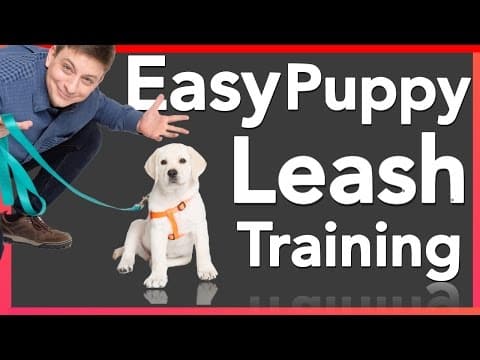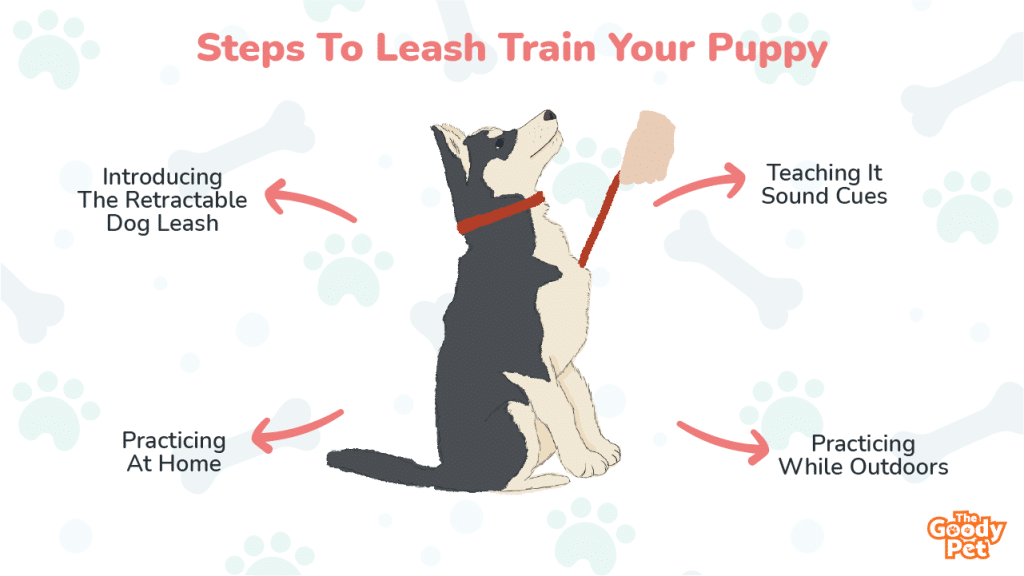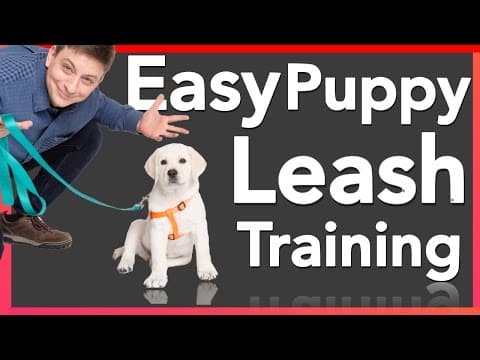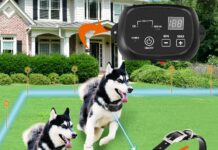You are calling out all dog lovers! If you’ve ever wondered when the perfect time is to start leash training your adorable bundle of fur, look no further. This article will uncover the optimal age for beginning leash training with your puppy.
With expert tips and guidance, we’ll help you navigate this exciting stage of your furry friend’s development, ensuring the process is smooth and enjoyable for both of you. So, let’s get started on this leash-training adventure together!
Factors to Consider
Breed of the Puppy
When leash training a puppy, the first factor to consider is the breed. Different breeds have different temperaments, energy levels, and sizes, which can affect their readiness for leash training. Some breeds, like Labrador Retrievers and Border Collies, tend to be more eager to please and may be easier to train. In contrast, others, like Terriers and Beagles, maybe more independent and require more patience and consistency.
Size and Development of the Puppy
The size and development of the puppy also play a role in leash training. Puppies grow at different rates, and it’s essential to consider their size and physical capabilities when introducing them to the leash. A large breed puppy may need a sturdier leash and collar than a small breed puppy, and their training sessions may need to be adjusted accordingly.
Individual Personality and Temperament
Just like humans, puppies have their unique personalities and temperaments. Some puppies may be more outgoing and confident, making them more receptive to training, while others may be more timid or stubborn. It’s essential to approach leash training with an understanding of your puppy’s individual needs and adjust your training techniques accordingly. What works for one puppy may not work for another, so be patient and flexible.
Health and Veterinary Recommendations
Before starting leash training, it’s essential to consider your puppy’s health and any veterinary recommendations. Puppies should be up-to-date on their vaccinations and have a clean bill of health before venturing outside for leash training. If your puppy has health concerns or special considerations, it’s best to consult your veterinarian for guidance on when and how to start leash training.
Early Training Basics
Socialization and Basic Obedience
One of the most critical aspects of leash training is socialization and basic obedience. Socialization helps puppies become familiar with different environments, people, and other animals, while basic obedience lays the foundation for good behavior on the leash. It’s best to start socialization and basic obedience training as early as possible, ideally between 8 and 12 weeks of age.
Introduction to the Leash
Introducing the leash to a puppy should be done gradually and positively. Begin by allowing the puppy to sniff and investigate the leash while rewarding them with treats and praise. Once the puppy is comfortable with the leash, you can start attaching it to their collar for short periods indoors. This will help the puppy get used to the feeling of the leash before venturing outside.
Positive Reinforcement and Treats
Positive reinforcement is a practical training technique for leash training. Rewarding the puppy with treats, praise, and affection for desired behaviors helps to reinforce those behaviors and makes the training process enjoyable for both the puppy and the trainer. Make sure to choose high-value treats that your puppy finds especially enticing to maximize the effectiveness of positive reinforcement.
This image is the property of pupbox.com.
Age-Specific Leash Training
8-12 Weeks: Introducing the Leash and Collar
Between 8 and 12 weeks of age, you can start introducing the leash and collar to your puppy. As mentioned earlier, this should be done gradually and positively. Start by allowing the puppy to wear the collar for short periods indoors, gradually increasing the duration. Then, attach the leash to the collar and allow the puppy to drag it around under supervision. Use treats and praise to create positive associations with the leash and collar.
12-16 Weeks: Loose Leash Walking
At around 12 to 16 weeks, your puppy should be ready to start learning loose-leash walking. This means walking on a leash without pulling or tugging. Start by walking in a quiet, familiar environment and use treats to reward your puppy for staying by your side and not pulling on the leash. Be patient and consistent, as it may take time for your puppy to understand what is expected of them.
4-6 Months: Advanced Leash Training
Once your puppy has mastered loose leash walking, you can move on to more advanced training exercises. This may include walking on a variety of surfaces, encountering distractions, and practicing commands such as “sit,” “stay,” and “heel” while on the leash. Gradually increase the difficulty level of the training sessions, always rewarding your puppy for their successes and providing encouragement when challenges arise.
Common Challenges and Solutions
Pulling on the Leash
One of the most common challenges in leash training is dealing with a puppy that pulls on the leash. Pulling can be frustrating for the puppy and the trainer, but it can be addressed with consistency and positive reinforcement. Start by stopping whenever your puppy pulls on the leash and only continue walking when they return to your side. Reward them for walking by your side, and provide ample exercise and mental stimulation opportunities to help release excess energy.
Distractions and Reactivity
Puppies are naturally curious and easily distracted, making leash training challenging in a stimulating environment. If your puppy becomes reactive or overly excited when encountering distractions, remaining calm and patient is essential. Practice basic obedience commands in a controlled environment and gradually increase distractions. Reward your puppy for staying focused and maintaining good leash manners.
Fear or Resistance to the Leash
Some puppies may exhibit fear or resistance when it comes to the leash. This can be due to previous negative experiences or a lack of familiarity. If your puppy shows signs of fear or resistance, taking a step back and giving them time to adjust is essential. Associate the leash with positive experiences by offering treats and praise whenever the leash is present. Gradually desensitize your puppy to the leash by allowing them to explore it at their own pace.
This image is the property of pupbox.com.
Special Considerations for Specific Breeds
Toy and Small Breeds
Toys and small breeds may require special considerations regarding leash training. Their smaller size and more delicate frames may require a more lightweight leash and collar to prevent unnecessary strain. It’s also important to remember that small breeds may have different exercise needs and energy levels than larger breeds, so tailoring the training sessions to their specific needs is essential.
Medium and Large Breeds
Medium and large breeds have different physical and behavioral characteristics that can affect their leash training. These breeds may require a more durable leash and collar to accommodate their size and strength. It’s also essential to provide ample exercise and mental stimulation to prevent them from becoming bored or restless, which can lead to undesirable leash manners.
Giant Breeds
Giant breeds, such as Great Danes and Mastiffs, require special consideration due to their massive size and strength. Leash training for giant breeds should start as early as possible and focus on establishing control and good leash manners. Using a sturdy, high-quality leash and collar is crucial to ensure the puppy’s and the trainer’s safety. It’s also essential to provide regular exercise to prevent them from becoming overly exuberant on the leash.
Training Techniques and Tips
Start with Short Training Sessions
Regarding leash training, it’s essential to start with short training sessions. Puppies have short attention spans and can become easily overwhelmed, so keeping the training sessions brief and focused will yield better results. Aim for multiple short sessions throughout the day rather than one long session. This allows the puppy to stay engaged and prevents them from getting bored or frustrated.
Use Positive Reinforcement
Positive reinforcement is a critical component of successful leash training. Instead of resorting to punishment or force, focus on rewarding your puppy for desired behaviors. Use treats, praise, and affection to reinforce good leash manners and obedience. Positive reinforcement creates a positive association with the leash and makes the training process enjoyable for your puppy.
Consistency and Patience
Consistency and patience are essential when leash training a puppy. Dogs thrive on routine and repetition, so it’s essential to be consistent with your training methods and expectations. Establish clear rules and boundaries from the start and enforce them consistently. Additionally, be patient with your puppy as they learn to navigate the world on a leash. Rome wasn’t built in a day, nor is a well-behaved, leash-trained puppy.
Gradual Exposure to Different Environments
Leash training shouldn’t be limited to just one environment. Gradually expose your puppy to different environments and varying levels of distractions. Start in a quiet, familiar setting and gradually increase the difficulty level. This could include park walks, busy streets, or dog-friendly establishments. By gradually introducing your puppy to different environments, you’ll help them become more adaptable and confident on the leash.
This image is the property of www.thegoodypet.com.
Professional Training vs. Do-It-Yourself
Benefits of Professional Training
While it’s possible to leash train a puppy on your own, there are several benefits to enrolling in professional training classes. Professional trainers have the experience and knowledge to address specific behavioral issues and tailor the training to your puppy’s needs. They can also provide guidance and support throughout the training process, ensuring you and your puppy are on the right track.
DIY Training with Online Resources
If professional training classes aren’t feasible, plenty of online resources are available to guide you through the leash training process. Online tutorials, videos, and forums provide step-by-step instructions and tips for successful leash training. However, it’s important to remember that each puppy is unique, and what works for one may not work for another. Be prepared to adjust your training methods and consult a professional if you encounter any difficulties.
Additional Training Tools and Equipment
Harnesses and Collars
When choosing the right leash, harnesses and collars are important considerations. Harnesses distribute the pressure more evenly across the puppy’s chest, reducing the risk of injury or strain. Collars should fit properly and not be too loose or too tight. Consider your puppy’s breed, size, and individual needs when selecting the appropriate harness or collar.
Retractable Leashes
Retractable leashes can be a convenient tool for leash training, as they allow your puppy more freedom to explore while maintaining control. However, they should be used with caution and in appropriate environments. Retractable leashes can be challenging to control, especially for a young or untrained puppy, and may increase the risk of accidents or injuries if not used properly.
Training Treats and Rewards
Training treats and rewards are an essential part of leash training. Choose small, soft, and highly palatable treats to maximize their effectiveness. Keep a supply of treats handy during training sessions and reward your puppy consistently for desired behaviors. In addition to treats, verbal praise, and petting can also be used as rewards to reinforce good leash manners.
This image is the property of www.thefarmersdog.com.
Important Safety Considerations
Choosing the Right Equipment and Fit
One of the most important safety considerations when leash training a puppy is choosing the right equipment and ensuring a proper fit. Ill-fitting collars or harnesses can cause discomfort or injury, so selecting the appropriate size for your puppy is crucial. Regularly check the fit of the collar or harness as your puppy grows and make any necessary adjustments. Additionally, inspect the leash for any signs of wear or damage and replace it if needed.
Avoiding Choking or Neck Strain
To prevent choking or neck strain, avoiding excessive pulling or jerking of the leash is important. Use positive reinforcement to encourage your puppy to walk calmly by your side rather than pulling on the leash. Additionally, consider using a harness instead of a collar, as harnesses distribute the pressure more evenly across the puppy’s body, reducing the risk of injury.
Avoiding Excessive Leash Pulling
Excessive leash pulling can create tension and strain not only on your puppy’s neck but also your body. It’s essential to address pulling behaviors early to prevent them from becoming a habit. Use positive reinforcement to reward your puppy for walking calmly on a loose leash and stop walking whenever they pull. Consistency and patience are key when teaching your puppy to walk politely on the leash.
Conclusion
Leash training is an essential skill for every puppy, regardless of breed, size, or temperament. By considering factors such as breed, size, and individual needs, you can tailor the training to your puppy’s specific requirements. Starting with early training basics, such as socialization and basic obedience, and gradually progressing to age-specific leash training will set your puppy up for success. Overcoming common challenges and understanding the unique considerations of different breeds will help you confidently navigate the training process. Whether you seek professional training or opt for DIY methods, remember to prioritize safety, use positive reinforcement, and be consistent and patient throughout the training journey. Leash training provides your puppy with the skills they need to explore the world safely and strengthens the bond between you and your furry companion.
This image is the property of i.ytimg.com.














































